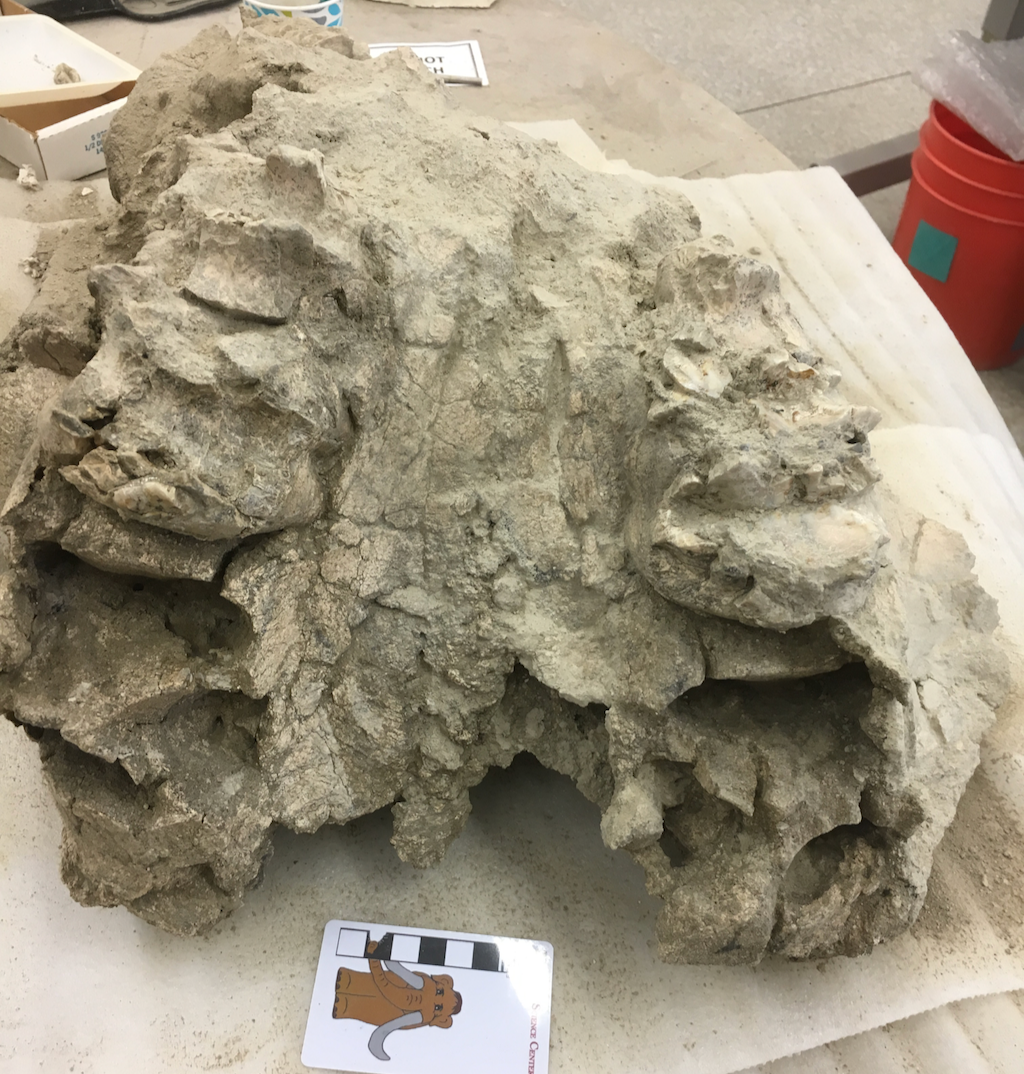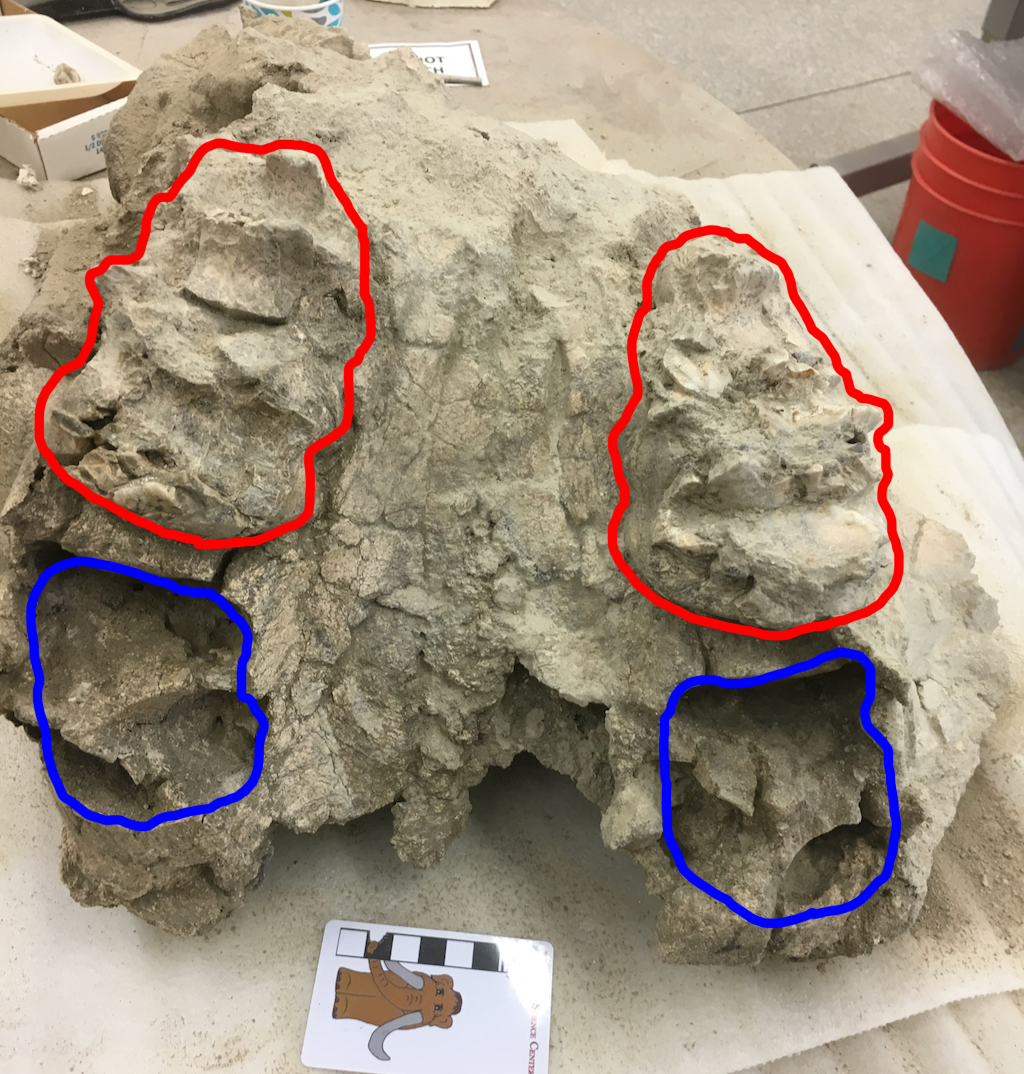 A few weeks ago I wrote about a mastodon skull we had moved into the lab for additional prep work. Kind of a lot has happened since then.We managed to successfully remove the remaining part of the original field jacket, which had bee on the skull since it was first found in 1997. That enabled us to turn the skull over and start working on the ventral side, where we could get a better view of the teeth.I speculated last week that this skull was almost certainly either a juvenile or a female, based on its small size and small tusk diameter (while the tusks aren't preserved, their sockets are). The determination between juvenile and female depended on whether or not the preserved tooth was the 1st molar (indicating a young animal) or the 2nd molar (indicating a young adult, and therefore probably a female). It turns out everyone was wrong!
A few weeks ago I wrote about a mastodon skull we had moved into the lab for additional prep work. Kind of a lot has happened since then.We managed to successfully remove the remaining part of the original field jacket, which had bee on the skull since it was first found in 1997. That enabled us to turn the skull over and start working on the ventral side, where we could get a better view of the teeth.I speculated last week that this skull was almost certainly either a juvenile or a female, based on its small size and small tusk diameter (while the tusks aren't preserved, their sockets are). The determination between juvenile and female depended on whether or not the preserved tooth was the 1st molar (indicating a young animal) or the 2nd molar (indicating a young adult, and therefore probably a female). It turns out everyone was wrong! The teeth are outlined in blue above, with the empty tooth sockets outlined in blue. The teeth turned out to be 3rd molars, making the animal much older than I thought! The empty sockets, instead of being for the 4th premolars or 1st molars, were actually for the 2nd molars.The 3rd molars in this case were either unerupted or just starting to erupt; the 2nd molars probably fell out after death. That means this mastodon was probably between 25 and 30 years old when it died. Instead of the pre-teen or teenager I expected, this was a fully mature female mastodon, the first one identified from Diamond Valley Lake.We still have a bit more cleaning to do to the skull. Unfortunately, while there is a substantial amount of bone present behind the palate, it is completely splintered and probably can't be reconstructed. Even so, we'll be getting some good data from this specimen.
The teeth are outlined in blue above, with the empty tooth sockets outlined in blue. The teeth turned out to be 3rd molars, making the animal much older than I thought! The empty sockets, instead of being for the 4th premolars or 1st molars, were actually for the 2nd molars.The 3rd molars in this case were either unerupted or just starting to erupt; the 2nd molars probably fell out after death. That means this mastodon was probably between 25 and 30 years old when it died. Instead of the pre-teen or teenager I expected, this was a fully mature female mastodon, the first one identified from Diamond Valley Lake.We still have a bit more cleaning to do to the skull. Unfortunately, while there is a substantial amount of bone present behind the palate, it is completely splintered and probably can't be reconstructed. Even so, we'll be getting some good data from this specimen.
